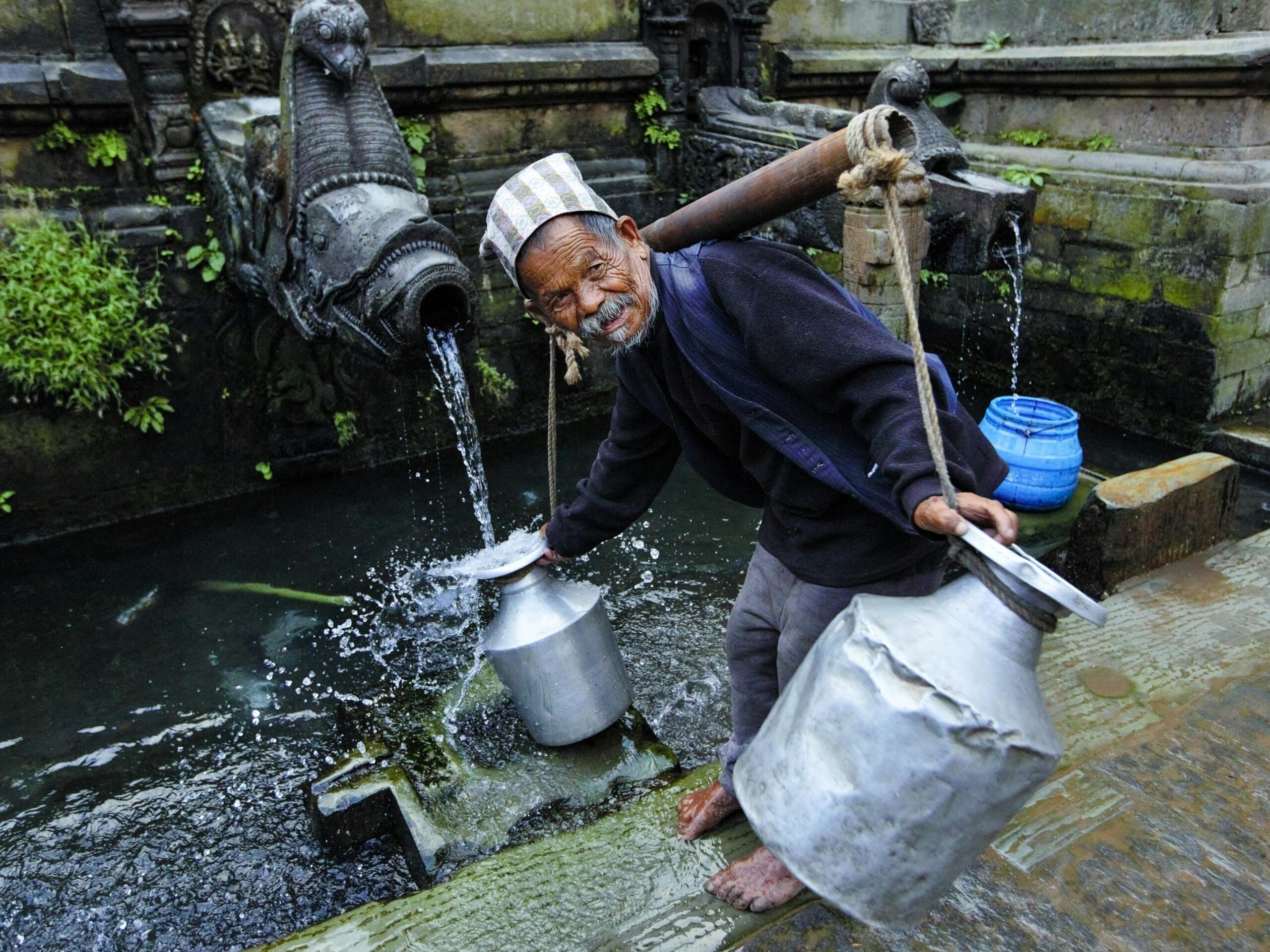Ancient civilizations understood something profound about water that modern society is only beginning to rediscover: water holds memory, energy, and the key to sustainable living.
🌊 The Sacred Science Behind Ancient Water Wisdom
For thousands of years, cultures across the globe have treated water as more than just a resource—they’ve honored it as a living, sacred entity. From the Ganges River in India to the hot springs of Japan, from Mayan cenotes to Celtic holy wells, water has been central to spiritual practices and community sustainability. Today, scientists and environmentalists are uncovering that these ancient practices weren’t merely symbolic; they contained practical wisdom that can revolutionize our approach to modern water management.
The concept of sacred water systems encompasses both the spiritual reverence for water and the sophisticated engineering methods ancient peoples developed to collect, distribute, and conserve this precious resource. These systems often integrated natural filtration, sustainable harvesting, and community-based governance that ensured long-term availability for all.
Traditional Water Management Systems That Still Work Today
Ancient civilizations developed remarkably sophisticated water management technologies that modern engineers are now studying and implementing. The Persian qanat system, for instance, transported water underground across vast distances without pumps, preventing evaporation and contamination. Some of these structures, built over 3,000 years ago, still function perfectly today.
In India, the traditional stepwell systems called baoris or vavs served multiple purposes: water storage, temperature regulation, and community gathering spaces. These architectural marvels descended several stories into the earth, maintaining cool temperatures and providing access to groundwater even during droughts. The intricate designs incorporated natural filtration through layered stone and sand, producing clean drinking water without modern technology.
Indigenous Rain Harvesting Techniques
The Anasazi people of the American Southwest created elaborate systems to capture every precious drop of rain in their arid environment. Their methods included strategically placed check dams, terraced gardens, and water channeling systems that directed runoff to agricultural areas and storage cisterns. These techniques sustained large populations in what many today consider uninhabitable desert regions.
Similarly, ancient Hawaiian ahupua’a systems divided land from mountain to sea, ensuring sustainable water distribution across entire watersheds. This integrated approach recognized that water management couldn’t be separated from overall land stewardship, creating ecosystems that supported biodiversity while meeting human needs.
💧 The Spiritual Dimension of Water Conservation
Modern sustainability efforts often focus purely on technical solutions, overlooking the psychological and cultural dimensions that made ancient systems work. Sacred water traditions embedded conservation into daily spiritual practice, creating powerful intrinsic motivations for protection and careful use.
When water sources are considered sacred, pollution becomes not just environmentally damaging but spiritually offensive. This mindset created natural protection mechanisms more powerful than modern regulations. Communities developed taboos against contamination, rituals that limited extraction rates, and festivals celebrating water that reinforced sustainable practices across generations.
Japanese Shinto shrines, for example, are almost always built near water sources considered sacred. The practice of ritual purification (misogi) before entering sacred spaces created a cultural understanding of water as both physically and spiritually cleansing, worthy of the highest respect and protection.
Ceremonial Practices as Conservation Tools
What appeared to outsiders as mere superstition often served practical conservation purposes. Seasonal restrictions on water use, framed as religious observances, allowed aquifers to recharge. Sacred groves protecting water sources prevented deforestation and erosion. Offerings and ceremonies at wells and springs brought communities together to maintain infrastructure and discuss water allocation.
The Aboriginal Australians’ songlines served as sophisticated oral maps encoding the locations of water sources across vast territories. These sacred songs, passed down through generations, ensured survival knowledge remained accessible while reinforcing cultural connections to specific water sites and the responsibility to protect them.
🏛️ Architectural Innovations from Ancient Hydraulic Engineers
The Romans are famous for their aqueducts, but their water management genius extended far beyond these iconic structures. Roman water systems included settling tanks for purification, distribution networks that prioritized public fountains, and even heated floors using water circulation—an early form of sustainable heating.
The Nabataeans of Petra built an empire in the desert through masterful water control. Their systems captured flash floods, directed water through channels carved in rock, and stored it in numerous cisterns. Ceramic pipes moved water uphill using hydraulic pressure, demonstrating advanced understanding of physics that wouldn’t be “rediscovered” in Europe for centuries.
Living Root Bridges and Natural Infrastructure
In Meghalaya, India, the Khasi and Jaintia tribes grow living bridges from the aerial roots of rubber trees. These structures can take 15-20 years to become fully functional, but they last for centuries and actually grow stronger over time. This approach to infrastructure—working with nature rather than against it—offers profound lessons for sustainable development.
These bridges span rivers and streams, providing crucial connections during monsoon seasons while naturally filtering water and preventing erosion. The practice demonstrates patient, multi-generational thinking about infrastructure that contrasts sharply with modern short-term planning cycles.
Integrating Ancient Wisdom with Modern Technology
The most promising sustainability solutions combine traditional ecological knowledge with contemporary innovation. In Lima, Peru, researchers are reviving pre-Incan amunas—stone channels that direct seasonal runoff into mountain soils, where it filters down to recharge springs and wells during the dry season. This simple, ancient technology costs a fraction of modern water infrastructure while providing multiple ecosystem benefits.
Similarly, Israel has combined ancient desert farming techniques with modern drip irrigation and desalination, becoming a world leader in water efficiency. Traditional knowledge about heat-resistant crops, water-conserving planting methods, and natural pest control informed high-tech agricultural innovations.
Smart Systems Learning from Sacred Wells
Modern sensor technology can now monitor water quality and flow rates in real-time, but the placement and design of monitoring networks can learn from traditional sacred well locations. These sites were often chosen for their geological significance—natural springs, aquifer access points, and watershed boundaries that remain hydrologically important today.
Community-based water management apps are reviving the collective governance models of traditional systems, allowing neighborhoods to coordinate conservation efforts, share resources during shortages, and report problems quickly. Digital tools enable the kind of communal water stewardship that villages once practiced at the town well.
🌍 Global Examples of Sacred Water System Revival
Around the world, communities are rediscovering and restoring traditional water systems with remarkable results. In Rajasthan, India, the revitalization of traditional johads (small earthen check dams) has raised water tables, revived dried rivers, and transformed barren land into fertile fields. This grassroots movement has spread across thousands of villages, proving ancient methods can work at scale.
New Zealand’s recognition of the Whanganui River as a legal person with rights draws directly from Māori understanding of water as a living ancestor (tupuna). This legal innovation, grounded in indigenous wisdom, provides new frameworks for protecting waterways from pollution and over-extraction.
In Bolivia, traditional Aymara water management practices are being integrated into national water policy. The concept of “water harvesting” from fog, dew, and minimal rainfall using traditional methods is being expanded with modern materials, providing water to communities previously considered beyond the reach of conventional infrastructure.
Urban Applications of Ancient Principles
Even in modern cities, ancient water wisdom finds application. Singapore’s “ABC Waters Programme” (Active, Beautiful, Clean) draws inspiration from traditional water gardens, creating urban spaces where water features provide natural filtration, flood management, and community amenities simultaneously.
The sponge city initiative in China incorporates traditional concepts of working with water rather than simply channeling it away. Permeable surfaces, rain gardens, and wetland restoration follow principles ancient Chinese cities used for water management, reducing flooding while recharging urban aquifers.
Practical Steps for Implementing Sacred Water Principles
Individuals and communities can apply ancient water wisdom regardless of their setting. Start by understanding your local watershed—where does your water come from, and where does it go? This awareness, central to traditional water cultures, is the foundation for sustainable use.
Create a relationship with your water sources. Whether you live in a city or countryside, knowing the nearest river, lake, or aquifer and understanding its health connects you to the larger water cycle. Many communities organize watershed walks and river cleanups that echo ancient practices of tending sacred waters.
Household Water Conservation Rituals
- Install simple rainwater harvesting systems, even on small balconies, following traditional catchment principles
- Create greywater gardens that filter and reuse household water, mimicking natural wetland systems
- Practice gratitude rituals when using water, reinforcing mindful consumption
- Use traditional water-saving techniques like dishpans and limited-flow methods rather than running water continuously
- Plant native, drought-resistant species that indigenous peoples cultivated, reducing irrigation needs
Community Water Initiatives
Form or join watershed councils that bring together stakeholders to manage local water resources collectively, reviving traditional commons governance. Support the restoration of natural water features like springs, streams, and wetlands that may have been buried or diverted during development.
Advocate for green infrastructure that incorporates natural water filtration and storage, drawing from ancient designs. Rain gardens, bioswales, and constructed wetlands provide the same functions as elaborate traditional systems while fitting into modern urban contexts.
🔬 Scientific Validation of Traditional Water Knowledge
Research increasingly confirms the effectiveness of traditional water management practices. Studies of ancient agricultural terraces show they prevent erosion far more effectively than modern alternatives. Traditional irrigation timing, often aligned with lunar cycles and seasonal ceremonies, matches optimal plant growth periods identified by agricultural science.
The concept of “structured water”—water whose molecular arrangement has been altered through vortexing, minerals, or electromagnetic fields—echoes traditional beliefs about water energy and memory. While controversial, some research suggests treated water may have different properties affecting plant growth and health.
Microbiological studies of traditional fermentation vessels and water storage containers reveal that certain materials and designs naturally inhibit harmful bacteria while promoting beneficial ones. Clay pots, copper vessels, and silver-lined containers used traditionally show antimicrobial properties that kept water safe before chemical treatment.
Challenges and Considerations for Modern Implementation
Reviving ancient water systems isn’t always straightforward. Modern legal frameworks around water rights, property ownership, and infrastructure standards can conflict with traditional community-based approaches. Population density in many areas far exceeds what sustained historical communities, requiring adaptation rather than simple replication.
Climate change has altered rainfall patterns and temperatures, meaning some traditional systems designed for historical conditions may need modification. However, the resilience principles underlying these systems—diversity, flexibility, and working with natural processes—remain valuable for adaptation.
Cultural appropriation concerns arise when sacred water practices are adopted without understanding or respecting their spiritual and cultural contexts. Effective integration requires genuine collaboration with indigenous knowledge holders and respect for the cultural frameworks that gave rise to these practices.
The Future of Sacred Water Management ✨
As water scarcity intensifies globally, the wisdom encoded in sacred water traditions becomes increasingly relevant. These systems demonstrate that sustainability isn’t just about technology—it’s about values, community structures, and long-term thinking that our ancestors perfected over millennia.
The integration of ancient wisdom with modern capability offers hope for addressing water challenges without repeating the mistakes of purely technocratic approaches that ignore social and ecological contexts. By recognizing water as sacred—whether in spiritual or secular terms—we create the cultural foundation for true sustainability.
Educational initiatives that teach children about watershed ecology, water conservation, and the cultural heritage of local water systems plant seeds for generational change. When young people understand water as precious, connected, and requiring stewardship, they naturally adopt conservation behaviors and innovative thinking.

Embracing Water Wisdom in Daily Life
The power of sacred water systems ultimately lies not in elaborate infrastructure but in the mindset they represent. Treating water as precious, honoring its life-giving properties, and recognizing our interdependence with water cycles transforms how we use this essential resource.
Small daily practices accumulate into significant impact: shorter showers become meditation on gratitude; dishwashing becomes an opportunity to appreciate clean water’s value; rain becomes a blessing to harvest rather than a nuisance. These shifts in perspective, practiced consistently, create the cultural change necessary for sustainable water futures.
By unlocking the wisdom embedded in ancient water traditions and adapting it thoughtfully to modern contexts, we can create resilient, equitable water systems that honor both human needs and ecological integrity. The knowledge our ancestors developed through careful observation and deep relationship with water offers guidance precisely when we need it most—a testament to the timeless power of sacred water wisdom.
Toni Santos is an eco-spirituality researcher and planetary healing writer exploring how earth-based rituals, nature-centred philosophy and sacred ecology reconnect humanity with the living planet. Through his work on environment, consciousness and ritual, Toni examines how our relationship with Earth influences our awakening and actions. Passionate about land-wisdom, ritual practice and ecological integration, Toni focuses on how spiritual life can emerge from ecological awareness and how healing flows from land, water and community. His work highlights the union of ecology, mind and spirit — guiding readers toward a more grounded, relational, and sacred life. Blending ritual studies, environmental philosophy and ecological design, Toni writes about the human-earth story — helping readers understand how living systems, community and meaning intertwine in planetary healing. His work is a tribute to: The sacred connection between humanity and Earth’s living systems The power of ritual to rekindle land-memory and collective renewal The vision of ecology as sacred, relational and transformational Whether you are a ritual practitioner, ecological thinker or planet-healer, Toni Santos invites you to explore the path of planetary awakening — one ritual, one ecosystem, one transformation at a time.




